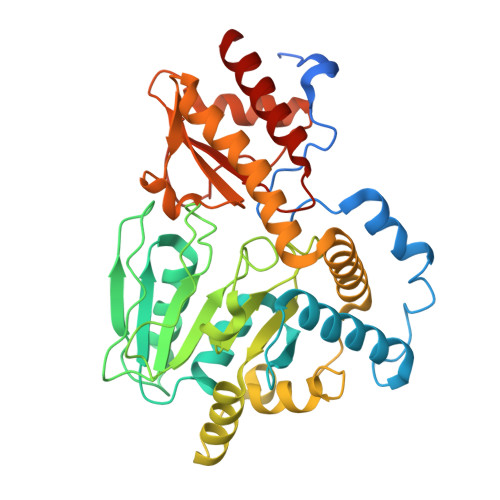Structure of phosphoserine aminotransferase from Mycobacterium tuberculosis.
Coulibaly, F., Lassalle, E., Baker, H.M., Baker, E.N.(2012) Acta Crystallogr D Biol Crystallogr 68: 553-563
- PubMed: 22525753
- DOI: https://doi.org/10.1107/S0907444912004829
- Primary Citation of Related Structures:
2FYF, 3VOM - PubMed Abstract:
Mycobacterium tuberculosis (Mtb), the causative agent of TB, remains a serious world health problem owing to limitations of the available drugs and the emergence of resistant strains. In this context, key biosynthetic enzymes from Mtb are attractive targets for the development of new therapeutic drugs. Here, the 1.5 Å resolution crystal structure of Mtb phosphoserine aminotransferase (MtbPSAT) in complex with its cofactor, pyridoxal 5'-phosphate (PLP), is reported. MtbPSAT is an essential enzyme in the biosynthesis of serine and in pathways of one-carbon metabolism. The structure shows that although the Mtb enzyme differs substantially in sequence from other PSAT enzymes, its fold is conserved and its PLP-binding site is virtually identical. Structural comparisons suggest that this site remains unchanged throughout the catalytic cycle. On the other hand, PSAT enzymes are obligate dimers in which the two active sites are located in the dimer interface and distinct differences in the MtbPSAT dimer are noted. These impact on the substrate-binding region and access channel and suggest options for the development of selective inhibitors.
- Maurice Wilkins Centre for Molecular Biodiscovery and School of Biological Sciences, University of Auckland, Private Bag 92019, Auckland, New Zealand.
Organizational Affiliation:




















